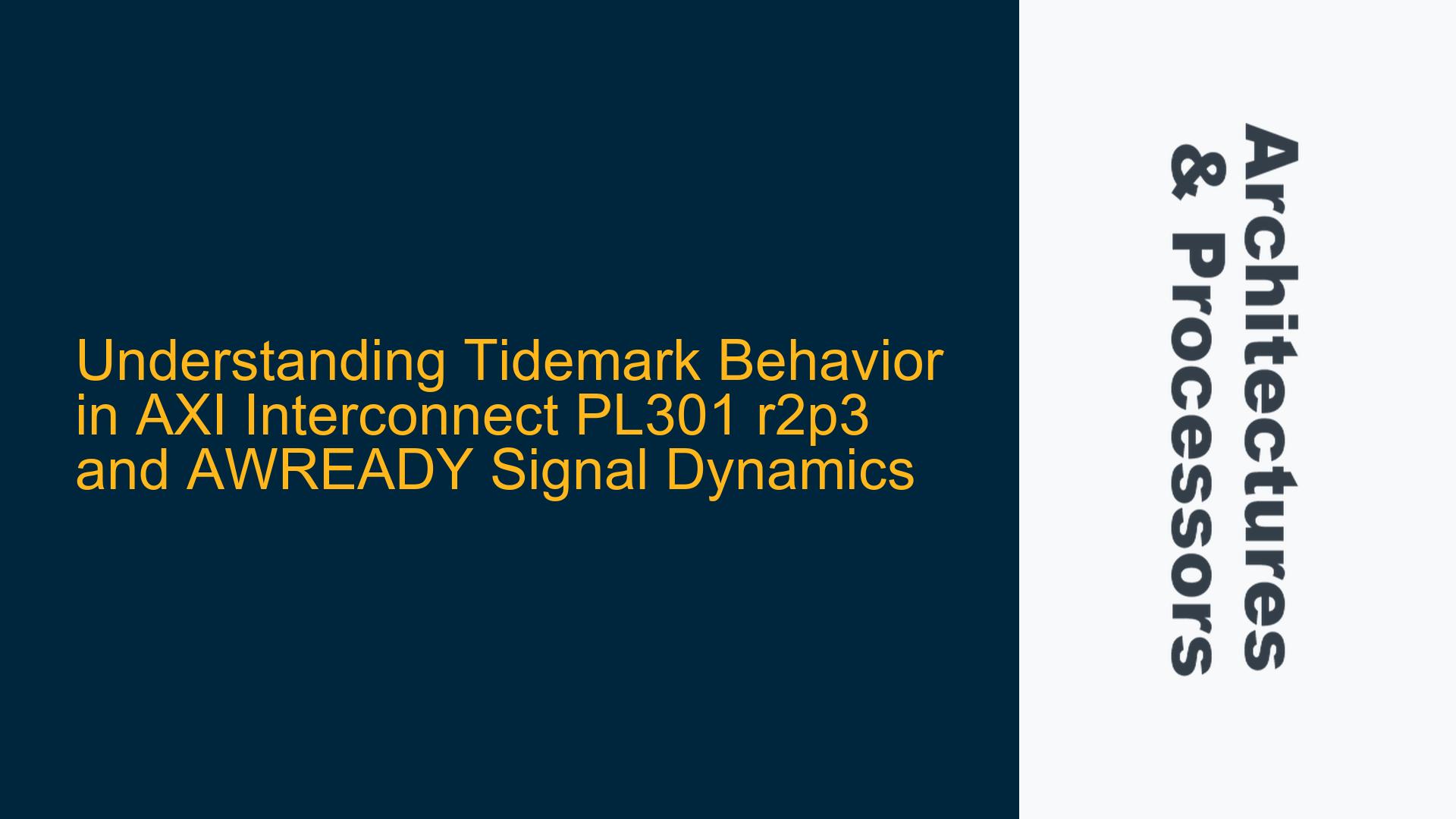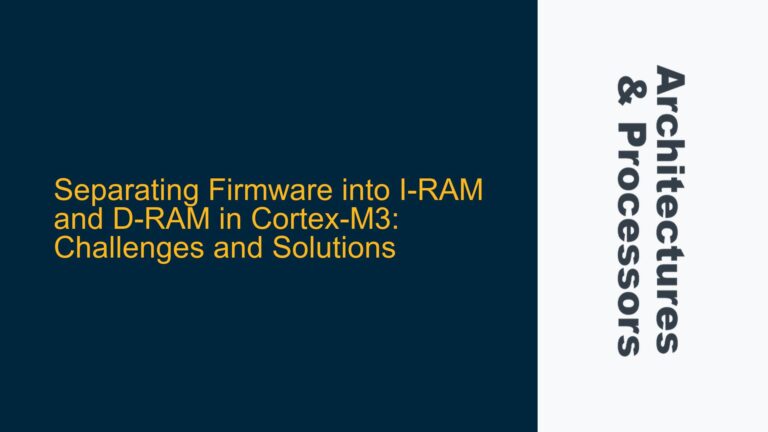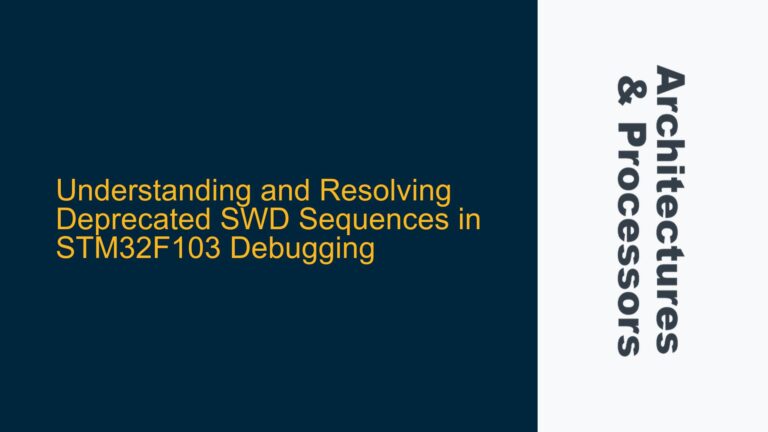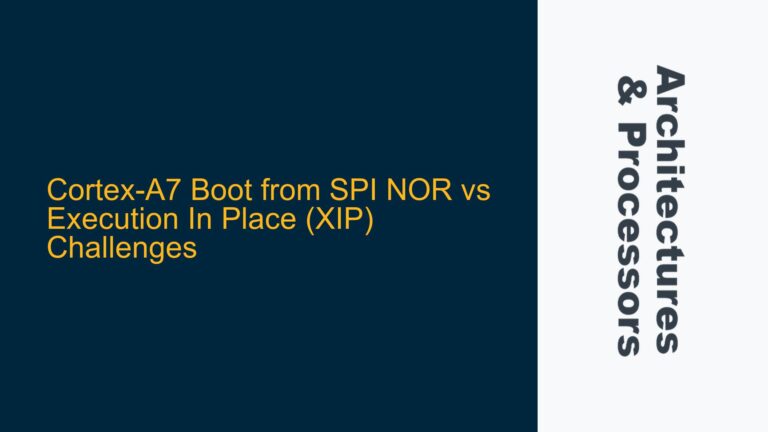Tidemark Functionality in AXI Interconnect and Its Impact on AWREADY
The Tidemark functionality in the AXI Interconnect PL301 r2p3 is a critical feature that governs the flow control of write transactions between AXI masters and slaves. Tidemark is essentially a threshold mechanism that determines when the interconnect should stall or allow the release of write transactions based on the occupancy level of the write data FIFO. This mechanism is particularly important in scenarios involving back-to-back outstanding transactions, where the efficient management of data flow is essential to prevent bottlenecks and ensure optimal performance.
When a write transaction is initiated by an AXI master, the interconnect’s write data FIFO temporarily stores the data before forwarding it to the slave. The Tidemark value, which can be configured for both master and slave interfaces, defines a threshold level within this FIFO. If the number of occupied slots in the FIFO exceeds the Tidemark value, the interconnect will stall the release of the transaction until certain conditions are met. These conditions include the reception of the WLAST beat, the FIFO becoming full, or the FIFO occupancy dropping below the Tidemark threshold.
The AWREADY signal, which is part of the AXI write address channel, plays a crucial role in this process. The AWREADY signal is asserted by the slave to indicate that it is ready to accept a new write address. However, when the Tidemark threshold is exceeded, the interconnect may deassert the AWREADY signal to temporarily halt the flow of new write addresses from the master. This behavior is designed to prevent the FIFO from overflowing and to ensure that the slave has sufficient time to process the incoming data.
In the scenario described, the Tidemark value is set to 4, and the AWREADY signal exhibits specific behavior during back-to-back outstanding transactions. The deassertion of AWREADY when the FIFO occupancy exceeds the Tidemark threshold is a deliberate mechanism to manage data flow and prevent congestion. This behavior ensures that the interconnect can efficiently handle multiple outstanding transactions without overwhelming the slave or causing data loss.
Configuration and Timing Issues Leading to AWREADY Signal Anomalies
The observed behavior of the AWREADY signal in the context of the Tidemark functionality can be attributed to several potential causes related to configuration and timing. One of the primary factors is the setting of the Tidemark value itself. The Tidemark value must be carefully chosen based on the specific requirements of the system, including the depth of the write data FIFO, the frequency of write transactions, and the processing capabilities of the slave.
If the Tidemark value is set too low, the interconnect may prematurely stall the release of transactions, leading to inefficiencies and potential performance degradation. Conversely, if the Tidemark value is set too high, the interconnect may not stall transactions in time to prevent FIFO overflow, resulting in data loss or corruption. In the described scenario, the Tidemark value of 4 may be appropriate for certain configurations, but it is essential to verify that this value aligns with the system’s overall design and performance goals.
Another potential cause of AWREADY signal anomalies is the timing of the WLAST beat. The WLAST beat indicates the final data transfer in a write transaction, and its reception is one of the conditions that must be met before the interconnect can release a stalled transaction. If there is a delay in the arrival of the WLAST beat, the interconnect may continue to stall the transaction, leading to prolonged deassertion of the AWREADY signal. This delay could be caused by various factors, including clock domain crossing issues, arbitration delays, or contention for shared resources within the interconnect.
Additionally, the depth of the write data FIFO itself can impact the behavior of the AWREADY signal. If the FIFO depth is insufficient to handle the volume of incoming data, the FIFO may frequently reach its Tidemark threshold, causing the AWREADY signal to be deasserted more often than expected. This situation can be exacerbated in systems with high write transaction rates or large data payloads.
Finally, the configuration of the interconnect’s arbitration and prioritization mechanisms can also influence the behavior of the AWREADY signal. If the interconnect is configured to prioritize certain transactions over others, it may delay the processing of write transactions, leading to increased FIFO occupancy and more frequent deassertion of the AWREADY signal. This prioritization can be particularly impactful in systems with multiple masters competing for access to the same slave.
Optimizing Tidemark Configuration and Resolving AWREADY Signal Issues
To address the issues related to the Tidemark functionality and the behavior of the AWREADY signal, several troubleshooting steps and solutions can be implemented. The first step is to carefully review and adjust the Tidemark value based on the system’s specific requirements. This involves analyzing the depth of the write data FIFO, the frequency and size of write transactions, and the processing capabilities of the slave. A Tidemark value that is too low should be increased to reduce unnecessary stalling, while a value that is too high should be decreased to prevent FIFO overflow.
Next, it is essential to ensure that the timing of the WLAST beat is optimized to minimize delays in transaction release. This can be achieved by carefully managing clock domain crossings, reducing arbitration delays, and minimizing contention for shared resources within the interconnect. In some cases, it may be necessary to adjust the clock frequencies or implement additional synchronization mechanisms to ensure that the WLAST beat arrives in a timely manner.
The depth of the write data FIFO should also be evaluated and adjusted if necessary. If the FIFO depth is insufficient to handle the volume of incoming data, it should be increased to reduce the frequency of Tidemark threshold exceedances and the associated deassertion of the AWREADY signal. This adjustment should be made in conjunction with a review of the system’s overall data flow and performance requirements to ensure that the FIFO depth aligns with the system’s design goals.
In addition to these adjustments, the configuration of the interconnect’s arbitration and prioritization mechanisms should be reviewed and optimized. This involves ensuring that write transactions are given appropriate priority relative to other types of transactions and that the arbitration logic is designed to minimize delays in transaction processing. In some cases, it may be necessary to implement custom arbitration schemes or adjust the weighting of different transaction types to achieve the desired balance between performance and resource utilization.
Finally, it is important to conduct thorough simulation and testing to validate the effectiveness of these adjustments and ensure that the AWREADY signal behaves as expected under various operating conditions. This testing should include scenarios with high write transaction rates, large data payloads, and multiple masters competing for access to the same slave. By carefully analyzing the results of these tests, any remaining issues can be identified and addressed, ensuring that the Tidemark functionality and the AWREADY signal operate as intended.
In conclusion, the Tidemark functionality in the AXI Interconnect PL301 r2p3 is a powerful tool for managing the flow of write transactions between AXI masters and slaves. However, its effective use requires careful configuration and optimization to ensure that the AWREADY signal behaves as expected and that the system operates efficiently. By following the troubleshooting steps and solutions outlined above, designers can resolve issues related to Tidemark configuration and AWREADY signal behavior, ensuring optimal performance and reliability in their ARM-based SoC designs.






